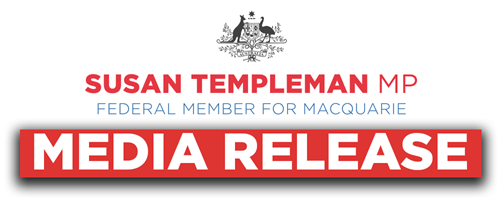
When preparing for bushfires, the sky’s the limit
In recent weeks, smoke from hazard reductions has been a source of anxiety for some, but for most it’s been a very welcome sign that areas unburnt for decades are having fuel loads reduced.
And while the most immediate threats we face are currently wet-weather-related, this is absolutely the time to be preparing for the next bushfire threat.
Along with on-the-ground risk reduction, there are two other vital steps: hardening the communication infrastructure we rely on in disasters and boosting our aerial fire-fighting capabilities.
Locally, the Albanese Government has co-investment with Telstra to expand mobile coverage in the Blue Mountains and Hawkesbury, including progressing the build of new mobile towers in Blaxlands Ridge, Maraylya, Yellow Rock, Hawkesbury Heights and Mount Tomah plus a series of improvements in the Macdonald Valley.
Work on the National Broadband Network means not only is the key Ebenezer Fixed Wireless tower better insulated into the future with an expanded backup generator, but a recent additional generator for the Sackville site will keep residents connected from Cattai to Lower Portland.
These are important upgrades that respond to the recommendations in the Royal Commission following the 2019-20 bushfires.
We are also rolling out full fibre nbn to most of the Blue Mountains and many more areas in the Hawkesbury, improving connectivity reliability and resilience.
But perhaps the most visual improvement is the gathering of the largest fleet of water bombing aircraft that Australia has ever seen, including six large aerial tankers - some leased, some owned by governments around Australia - and a lot of smaller airplanes and helicopters.
All up, we now have a fleet of about 500 aircraft available to be used in different parts of the country as the need arises.
At Richmond RAAF base, the location of significant RFS aerial capability, we saw the deployment of the federally funded National Large Air Tanker last December, as well as the earlier arrival of the $9M new Chinook Helicopter purchased by the NSW Government.
Australian government funding has expanded to $31million a year for the National Aerial Firefighting Council, for the fleet.
It’s no secret that I lost my home, along with 200 other families, in the 2013 Winmalee bushfire. I can’t help but imagine how different that October day would have been if the aerial resources we have now had been available then.
There is more to do, but ours is a federal government committed to bolstering disaster response and the ability of our communities to prepare for, reduce the risk of, and fight bushfires. Our investments are the silver lining of cloudy days that will protect lives and property when the sun shines way too hard and bright.


